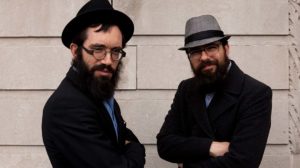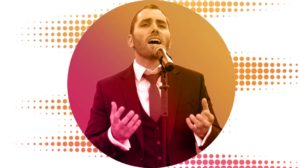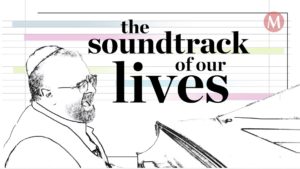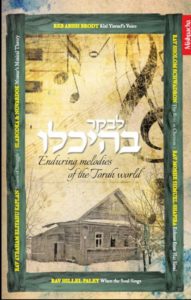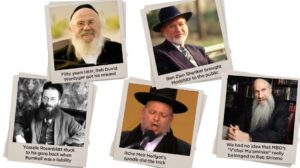Back to Tradition
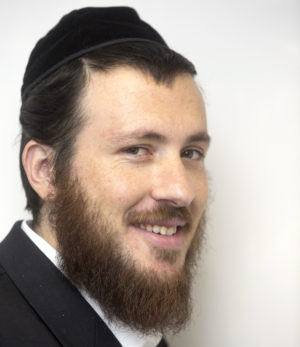
Chaim Topol, the Israeli actor most famous for his portrayal of Tevye the milkman has found his way back to the energy of the shtetl.
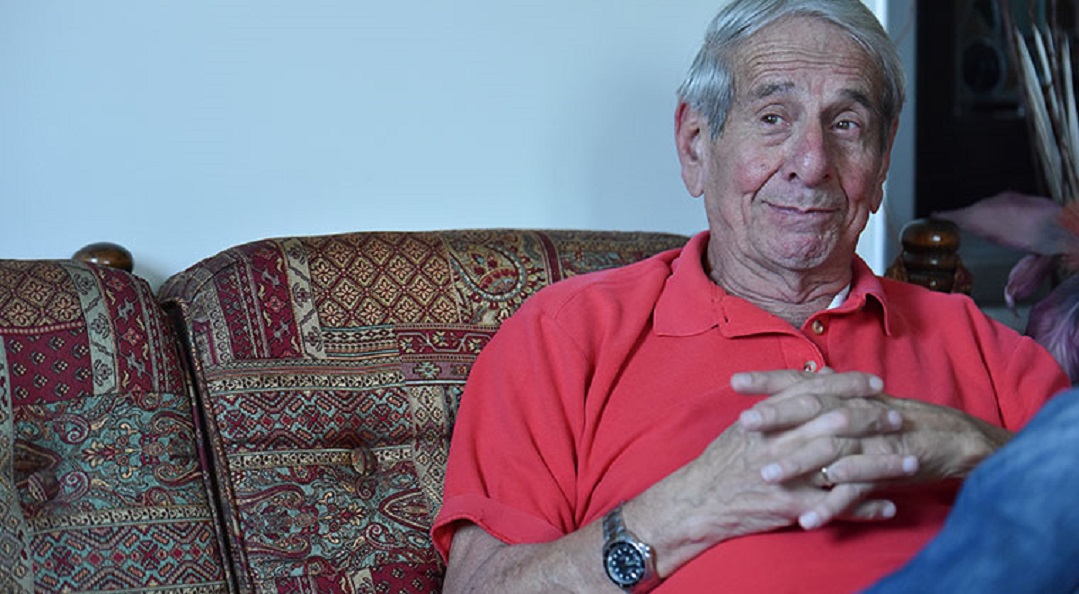
M
illions of people across the world are familiar with the name Chaim Topol or just “Topol” as he was known in his heyday. From Tokyo to Los Angeles masses came to watch the Israeli-born actor perform the role of Tevye the lovable dairyman and hapless star of Fiddler on the Roof. Virtually the only demographic unfamiliar with — and unimpressed by — his star role is the chareidi public he worked so hard to depict. Yet an aging Topol reveals that he’s spent some of his best hours bent over a Gemara training his mind to follow the principles and positions of Abaye and Rava. As he straddles the dual roles of celebrated actor and spiritual explorer he is also taking tentative steps toward the tradition that resonated throughout his most famous role.
The musical play that put Topol’s name in lights is based on a tale written by the Yiddish writer Sholem Aleichem. The storyline is a familiar one to many Jews with roots in Eastern Europe: a poverty-stricken Jewish family living in the Russian Pale of Settlement faces new dangers to tradition from both without and within. From without the Russian authorities and soldiers bring a slew of persecution pogroms and eviction. From within the winds of change from the Enlightenment and Communism threaten to topple the religious commitment of an entire generation. Tevye’s family suffers the full brunt of those forces and his daughters for the most part sever their connection to their religion.
It’s ironically fitting that Chaim Topol was cast as Tevye. His family could have been a case study for Fiddler’s plot. Topol stems from a rich Eastern European chassidic heritage that was largely discarded somewhere along the way for the starry vistas of Zionism and then the lure of the stage and screen. But in recent years the plaintive call of “Tradition!” has made inroads in his soul. The iconic actor has yet to make the leap to full observance but there’s a definite flicker of religious awareness in Chaim Topol.
In the early days of the State of Israel Chaim Topol was a source of great pride. An entire generation of Israelis drank in his performances. When I ask him to don his kippah and act out his Gemara study sessions for me he demurs. “Not all the world is a stage ” he says intentionally misquoting Shakespeare. “And Gemara’s not a game.” Then his inner actor finds a solution. “Instead of putting on a show why don’t we learn for real?”

He pulls out a knitted kippah flips through the Gemara with a practiced finger and turns to daf 21 amud alef three lines into the sugya of Chanukah. “Amar Rav Huna ” the rich baritone fills his Tel Aviv apartment.
This isn’t a one-time spectacle. Topol has been learning Gemara with a steady chavrusa for decades; he’s covered large portions of Shas by now. “I’m no youngster anymore ” he says. “I’m already 82 years old. But I haven’t yet finished Shas. There are some masechtos I’ve learned a few times and some I haven’t yet touched.”
It’s hard to reconcile the two Topols here in this room: the kippah-clad student of Judaism’s holiest texts and the film star who embodied secular success for an entire generation. Topol admits that he’s something of a rare bird among his high-society friends. There aren’t too many veteran artists of his caliber who have such intimate knowledge of a folio of Gemara. Still he says the flavor of tradition has always been an ingredient in his life.
T
opol born in 1935 in Tel Aviv is part of that generation that still had a direct link to the Judaism of yesteryear. His Yiddish if you can judge from our small talk isn’t bad. “My father didn’t want his Israeli-born son to speak the language of the shtetl ” he says. “But when he needed to talk privately with my mother he’d whisper to her in Yiddish. I think if I would have stayed around the house longer I would speak Yiddish a lot better today.”
The elder Topol’s conflicted relationship with Yiddish was just a symptom of his pained relationship with Judaism in general. “As a child, my father, Yaakov Topol, was the person I loved most of anyone in the world. He was born in a little village on the outskirts of Warsaw. My grandfather, Reb Chaim Kossover-Topol, had a mixed marriage,” he says with a sly smile. “He was an Alexander chassid and his wife came from the Goldman family, fervent Gerrer chassidim… back then, it was the type of marriage that turned heads.”
Topol, he explains, may sound like a newfangled Israeli name, but it was actually the family name back in Europe. “It’s a type of tree,” he says. “I have a detailed yichus briv going back almost to the 11th century, and the name is there.”
As a teenager, Yaakov Topol was swept up by the Beitar Movement. In 1933 he made aliyah, his third attempt (the first two illegal attempts were unsuccessful). He settled in Nes Tziyona and found a job working in an orchard.
He married and moved to Tel Aviv’s Florentine neighborhood shortly before the birth of Chaim, his eldest son, naming him after the grandfather who passed away just a year earlier. The Topol family lived in one room; the other room was inhabited by a different family. The neighborhood was a mosaic of varied ethnicities and cultures: Jews from Hungary, Poland, Salonika, and Bukhara all lived in close quarters. “It was like kibbutz galuyot,” Topol remembers. “One big salad of so many colors.”
Then the blood-curdling news started to come from Poland. The Topols learned that at the holiest moments of Simchas Torah of 1940, the Nazis had gathered all the Jews of their village in the central square, loaded them onto trains, and transported them to Treblinka. By the next morning, the community had been exterminated. Yaakov Topol was likely the sole survivor. His entire family, including his mother, had been killed.
“It hit my father to his core,” Topol says. “It filled him with this immense fury that we could never fully fathom. But despite his anger, despite the blow to his faith, he never abandoned it entirely. You could see that he was conducting this ongoing dialogue within: On the one hand, he was so angry, he had lost so much of his faith that he no longer could keep the mitzvos. But every Yom Tov, he would take me with him to the Beit Knesset Hagadol of Tel Aviv and say Kaddish for his parents.
“I remember,” his eyes narrow as he focuses on those times long ago, “when I was a little boy, one day we found out that the Gerrer Rebbe had arrived in Eretz Yisrael and would be visiting Tel Aviv. They prepared some space for him in a building on Levinsky Street, and masses of chassidim came there for the davening. My father, who wasn’t a Gerrer and who harbored tremendous anger toward religion, took me with him to the davening and even said Kaddish there. I realized that as much as he tried to escape, his Yiddishkeit and his chassidic roots would always be buried deep inside his soul. He lived with that dichotomy until his last day on earth — the anger along with the reverence.”
Chaim Topol waves a hand at his Gemara — a standard yeshivish edition, Maseches Shabbos, with the trademark emblem of the Wachschal Naharda edition. “I just learned the concept of girsa d’yankusa, the lasting impression made by material we learn as children. Even though my father had all this anger toward Yiddishkeit, my mother was closer to tradition. She kept what she could. She insisted that I get a religious education. Until age 14, I studied in the religious Tachkemoni school. I wore tzitzis under my shirt, I davened, I learned Tanach.”
Topol still feels gratitude toward one unforgettable teacher. “His name was Asher Rivlin; he was our Gemara teacher. He was also in charge of our extra-curricular programs. When I look back in time, I realize that he had this unique ability to connect his young students to the timelessness of the Gemara. Think about it; because of him I’ve been learning Gemara for several decades.
“Not that I’m the most diligent student,” he admits. “I can’t say I never miss a shiur. I travel a lot; it’s hard to keep a steady chavrusa. But I try to learn a bit wherever I am.”
It wasn’t always like that. After his high school years, Chaim Topol traveled a route far removed from tradition. He lived on a kibbutz, then enlisted in the army. There he found an outlet for the acting ability originally discerned back in elementary school.
“Once, when I was in third grade, a teacher overheard me telling my friends a story during recess. He was so impressed by the way I held their attention that he decided I should be the school’s in-house substitute teacher. Anytime the fifth or sixth grade teacher didn’t show up, they’d send me there to tell the older children stories.”
During his stint in the army, Topol made good on those latent acting talents. He joined and eventually led a troupe of actors and entertainers that traveled around the country cheering up and distracting young soldiers facing the ugliest of scenes. One of his closest buddies was Uri Zohar. After their army years, the two joined forces to launch a traveling musical theatre group, along with several other army veterans. Their little company began to gain acclaim throughout Israel.
Unlike most of the troupe members, Topol didn’t cut off Uri Zohar when the latter made his momentous decision to become frum. “Heaven forbid!” he says. “We’re close, close friends. We actually just spoke last week. He’s a wonderful person.
“But it’s not just because we were close that I accepted his decision. You have to understand, I grew up within the religious system. I didn’t see Torah observance as a negative or foreign thing.
“I still remember when Uri decided to become religious,” he says. “He was supposed to come to my place for rehearsals. Before he came, he called me and said, ‘Chaim, you’re going to be very surprised when you see me. Please, whatever you think, don’t make fun of me.’ I promised him I would keep my mouth shut. So then he showed up wearing a kippah and with tzitzis peeking out from under his shirt. I didn’t even smile. He couldn’t understand it. Why wasn’t I reacting? Why wasn’t I ridiculing him? I explained that a kippah and tzitzis weren’t funny or strange to me; I had worn them too, back when I was a kid.”
Uri Zohar had a different background; he affiliated with the extreme anti-religious Left, the Shomer Hatzair. “They bordered on Communism,” Topol explained. “Some of them even admired Stalin. After his initial enthusiasm, Uri grew very disillusioned with them. When he showed up at my place, visibly religious, there was something I had to tell him. ‘Uri,’ I said, ‘unlike all those parties and movements that you used to belong to — all of which have an expiration date — you should know that you’re now entering the party of the chareidim. It’s something completely different, something serious, something that’s lasted 3,000 years. You have to take that into account before you commit.’ I guess he really was determined to do it all the way,” Topol says. “Look where he is today.”
C
haim Topol could see the eternal value of Torah and mitzvos, but he wasn’t ready to take them on personally. While Uri Zohar abandoned the stage and immersed himself in Torah learning, Topol doggedly focused on his resume. By his mid-thirties, he had already achieved acclaim on London’s West End and then later on Broadway, winning several prestigious prizes and serving as an unofficial Israeli ambassador. “You would call it ah groise hatzluche,” he jokes. But for the aspiring actor, those prizes and opportunities were no joke. They were the keys to glitz and glamour, to fame and fortune.
Fittingly, Topol’s most famous roles in his long acting career were both traditional Jewish characters. His breakthrough role was Sallah Shabtai, a Sephardic immigrant facing the entrenched hierarchy of the Israeli State’s early years. His next role, the one that catapulted him onto the global stage, was that of Tevye the milkman, a na?ve Russian Jew bewildered by the onslaught of modernity and its hold on his children. The common denominator of both roles isn’t lost on Topol.
“At the end of the day, despite the specific nuances or accents or costumes or sets, you realize that a Jew is a Jew. No matter where you place him, no matter what he faces — when the going gets tough, he turns to HaKadosh Baruch Hu.”
It was surprising and fascinating, though, that the eternal plight of the embattled Jew managed to capture the hearts of millions of non-Jews around the world. Topol starred in the 1971 film version of Fiddler, and later in the international stage revival (the original stage Tevye was Zero Mostel.) “Everywhere I performed, I was able to sense that the audience identified with my characters,” Topol says. “There’s this scene in Fiddler where the Cossacks storm onstage and conduct a pogrom. When I took a look at the audience, I could tell that they identified personally with the scene. When I performed in Turkey, the audience saw their Armenian enemies in those Cossacks. And when I performed in Greece, the audience was visualizing their Turkish oppressors. I guess every nation has its own personal Haman.”
In Japan, Topol encountered an unusual reaction. “The Japanese definitely identified with Tevye’s dreams of being a rich man. But things got unusual during Tevye’s long dialogues with G-d. Usually I pick up my head and speak to this invisible presence, kind of like a Breslover during hitbodedut. In Japan, every time I picked up my head in a certain direction, the entire audience would swivel their heads and look in the same direction. I couldn’t figure it out. Later I discussed it with two people — an Israeli friend of mine who’s studied Japanese culture, and a Japanese scholar of Israeli culture. Their explanation made it all click: The Japanese aren’t used to praying to a god they can’t see. They all have several figurines in their homes that they pray to. So when my character prayed to G-d, they all craned their necks upward, trying to locate Him… the concept that G-d is invisible, a Force you can speak to without seeing, is something so innately Jewish that they found it hard to digest.”
Topol’s slow dance back toward his heritage began on foreign soil, in London. “As a young teenager I had loved learning Gemara,” he says, “but during those decades when I was singularly focused on my acting career, it wasn’t my priority. About 50 years ago, I spent a while abroad. Suddenly I had this sensation that I was disconnected, unmoored. What was I missing? My Gemara. It was the strangest thing. I wasn’t keeping mitzvos, I was immersed in show business, but something in me was being compelled to learn. I decided to go back to Israel and find someone who could learn with me. I contacted a good friend, a wealthy Bukharan Jew named Moussaif. He had this love for Gemara learning, and we decided to learn together. He was very sharp, a real lamdan.”
The Gemara learning had a magic all its own. “From the moment I started learning, I couldn’t stop. I made it a priority virtually every week to sit and learn.” Moussaif introduced Topol to a Lubavitcher rabbi in London who taught him “and added some chassidish kneitsches too,” as Topol puts it.
“One week, my chavrusa wasn’t feeling well. I told him I wanted to learn anyway, and if he couldn’t come, he should send one of his children instead. He sent his 12-year-old son. I still remember that learning session. I was shocked. Here was a child learning text in Aramaic, translating it to himself in Yiddish and then explaining it to me in English. I thought he must be a genius.”
L
ater, Topol connected wtih a different chavrusa, a Yerushalayim scholar with strong ties to the Eidah Chareidis. “He’s very traditional — maybe even a kannai — but his open-mindedness in learning amazes me every time. He’s an amazing person, a father of 16. Sometimes we get a bit off topic, we talk about current events and argue a bit, but then we get right back into our learning. It’s a fantastic experience.”
For Topol, the greatest and most humbling aspect of Gemara learning is the way it molds the mind. “Every child who learns Gemara trains his mind not to take anything as a given. You state a basic assumption, and without skipping a beat, you’re asked, ‘minah lan — what’s the source?’ There are several options, several methods, and you have to calculate the results of each method down to the end, and sometimes after all that work you realize that your assumptions were all wrong. It sharpens the mind like nothing else. Why does Rabi Akiva say this, why does Rabi Shimon say that, why does Abaye say this…?
“Learning Gemara rejuvenates me. I hope I remain lucid the rest of my life, so I can keep learning.”
Does Topol share this delight with his circle of Tel Avivian artists and actors? “Not much,” he says. “Sometimes I get the rav’s permission to bring along a friend — a writer, an artist, a banker. The rav enjoys it, he enjoys the real-world examples that find their way to our Gemara learning. You know, Gemara learning can be extremely relevant to real life; these ancient discussions spark the most current debates. Sometimes, after hours of sitting and learning, I realized that we haven’t covered much ground. But learning can be deep, just as it can be broad.”
But Gemara learning isn’t just an intellectual exercise; it’s a blueprint for life.
“In recent years, I’ve been making an effort to lay Tefillin,” Topol says, showing me a siddur that’s worn from regular use. “Your siddur must look a lot like this, no?”
What are his future plans?
“The future,” he says with candor, “is very frightening. I’m not young anymore. Too many of my friends have already passed on. I know that every day of mine is in His hands.”
And what of his own family’s future, the next generation?
“I’m trying to pass on our traditions. Every Friday night, we gather together and I sing Kabbalas Shabbos with them.” The famous baritone voice hums the Modzhiter niggun, “Eileh chamda libi.”
In all honesty, Chaim Topol’s spiritual story has yet to find its happy ending. In Chanukah terms, his Torah spark has yet to burst into flame. He may best be categorized as part of a growing movement of Israelis who are slowly adapting bits and pieces of observance, yet are reluctant to make the leap to a full Torah lifestyle. Some are leery of the term “chareidi” and its political and social implications. Others are content to enjoy the benefits of a Shabbos here, a Yom Tov there, without a full commitment to religion. But as Chaim Topol can tell you, on this journey to tradition, there are many flickers of light.
No Apathy
Topol’s complete Shas is on the second floor of his home, along with his art studio. Not everyone knows that in addition to his acting and musical talents, Chaim Topol is also a talented artist who specializes in portraits. The table in his studio contains an album with all his drawings. For most of his life, drawing was a private hobby. Recently, it’s become more public. “When we used to finish a performance, pumping with adrenaline, my friends used to go out for a night on the town. But I preferred sitting at home and drawing.”
Today, though he’s in his eighties, his hand is still steady and he’s still producing more artwork. Each of his drawings has its own explanation and backstory. Two hours later, he’s still talking, and I wonder — is there something this multi-talented man can’t do?
“There is one thing that I can’t do,” he says after a pause. “I can’t be apathetic. I can’t see people suffering and remain unmoved.” In recent years, that intensely empathic nature has found expression in his pet project, the Jordan River Village, a respite camp in the Galil for chronically ill children. Topol visits the camp at least twice a week. “I do whatever I can to cheer up these children,” he says. “Then afterward, I go into my car and I cry. Seeing suffering like that is something I can never get used to.”
(Originally featured in Mishpacha Issue 690)
Oops! We could not locate your form.

